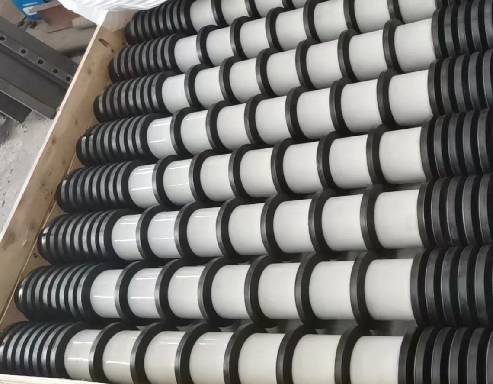 Afrikaans
Afrikaans  Albanian
Albanian  Amharic
Amharic  Arabic
Arabic  Armenian
Armenian  Azerbaijani
Azerbaijani  Basque
Basque  Belarusian
Belarusian  Bengali
Bengali  Bosnian
Bosnian  Bulgarian
Bulgarian  Catalan
Catalan  Cebuano
Cebuano  Corsican
Corsican  Croatian
Croatian  Czech
Czech  Danish
Danish  Dutch
Dutch  English
English  Esperanto
Esperanto  Estonian
Estonian  Finnish
Finnish  French
French  Frisian
Frisian  Galician
Galician  Georgian
Georgian  German
German  Greek
Greek  Gujarati
Gujarati  Haitian Creole
Haitian Creole  hausa
hausa  hawaiian
hawaiian  Hebrew
Hebrew  Hindi
Hindi  Miao
Miao  Hungarian
Hungarian  Icelandic
Icelandic  igbo
igbo  Indonesian
Indonesian  irish
irish  Italian
Italian  Japanese
Japanese  Javanese
Javanese  Kannada
Kannada  kazakh
kazakh  Khmer
Khmer  Rwandese
Rwandese  Korean
Korean  Kurdish
Kurdish  Kyrgyz
Kyrgyz  Lao
Lao  Latin
Latin  Latvian
Latvian  Lithuanian
Lithuanian  Luxembourgish
Luxembourgish  Macedonian
Macedonian  Malgashi
Malgashi  Malay
Malay  Malayalam
Malayalam  Maltese
Maltese  Maori
Maori  Marathi
Marathi  Mongolian
Mongolian  Myanmar
Myanmar  Nepali
Nepali  Norwegian
Norwegian  Norwegian
Norwegian  Occitan
Occitan  Pashto
Pashto  Persian
Persian  Polish
Polish  Portuguese
Portuguese  Punjabi
Punjabi  Romanian
Romanian  Russian
Russian  Samoan
Samoan  Scottish Gaelic
Scottish Gaelic  Serbian
Serbian  Sesotho
Sesotho  Shona
Shona  Sindhi
Sindhi  Sinhala
Sinhala  Slovak
Slovak  Slovenian
Slovenian  Somali
Somali  Spanish
Spanish  Sundanese
Sundanese  Swahili
Swahili  Swedish
Swedish  Tagalog
Tagalog  Tajik
Tajik  Tamil
Tamil  Tatar
Tatar  Telugu
Telugu  Thai
Thai  Turkish
Turkish  Turkmen
Turkmen  Ukrainian
Ukrainian  Urdu
Urdu  Uighur
Uighur  Uzbek
Uzbek  Vietnamese
Vietnamese  Welsh
Welsh  Bantu
Bantu  Yiddish
Yiddish  Yoruba
Yoruba  Zulu
Zulu self cleaning tail pulley
Self-Cleaning Tail Pulley Enhancing Conveyor System Efficiency
In various industrial applications, conveyor systems are crucial for transporting materials efficiently. However, one persistent challenge with these systems is the accumulation of debris and material build-up on critical components, particularly the tail pulley. To address this issue, the self-cleaning tail pulley has emerged as an innovative solution that enhances operational efficiency and prolongs equipment life.
Self-Cleaning Tail Pulley Enhancing Conveyor System Efficiency
Self-cleaning tail pulleys are designed to mitigate these problems through a combination of innovative features. One common design includes a specialized surface or a series of fins or grooves that encourage debris to fall away from the pulley instead of sticking to it. This design takes advantage of the impact and movement of the conveyor belt, allowing gravity and motion to assist in the removal of material as the tail pulley rotates. As a result, the pulley remains cleaner, reducing the frequency and extent of maintenance needed.
self cleaning tail pulley

The benefits of self-cleaning tail pulleys extend beyond just cleanliness. By minimizing material build-up, these pulleys help maintain proper belt tension and alignment, reducing strain on the system. This can lead to a significant decrease in the wear rate of both the belt and the pulley, ultimately extending the lifespan of the entire conveyor system. Furthermore, with less maintenance required for cleaning, operators can allocate resources more efficiently, focusing on other critical aspects of production.
Another advantage of self-cleaning tail pulleys is enhanced safety in the workplace. Excess material on tail pulleys can create hazards, including slipping or accidents for personnel conducting maintenance. By automatically keeping the pulley clean, the system reduces the risk associated with manual cleaning and maintenance tasks. Employees can work more confidently, knowing that the risk of accidental injury due to slipping on debris is minimized.
Self-cleaning tail pulleys are particularly beneficial in industries where moisture, dust, or sticky materials are commonplace. For instance, in mining, agriculture, and recycling industries, these pulleys can significantly improve operational efficiency and reduce downtime caused by maintenance. The integration of self-cleaning technology is becoming increasingly popular among conveyor system manufacturers and end-users alike, as they recognize the long-term cost savings and enhanced reliability these solutions provide.
In conclusion, self-cleaning tail pulleys represent a valuable advancement in conveyor system technology. By addressing the issues associated with material build-up, these innovative pulleys enhance efficiency, safety, and longevity of conveyor systems. As industries continue to seek ways to optimize performance and reduce operational costs, self-cleaning tail pulleys are likely to become a standard component in modern conveyor design.
-
Revolutionizing Conveyor Reliability with Advanced Rubber Lagging PulleysNewsJul.22,2025
-
Powering Precision and Durability with Expert Manufacturers of Conveyor ComponentsNewsJul.22,2025
-
Optimizing Conveyor Systems with Advanced Conveyor AccessoriesNewsJul.22,2025
-
Maximize Conveyor Efficiency with Quality Conveyor Idler PulleysNewsJul.22,2025
-
Future-Proof Your Conveyor System with High-Performance Polyurethane RollerNewsJul.22,2025
-
Driving Efficiency Forward with Quality Idlers and RollersNewsJul.22,2025





























